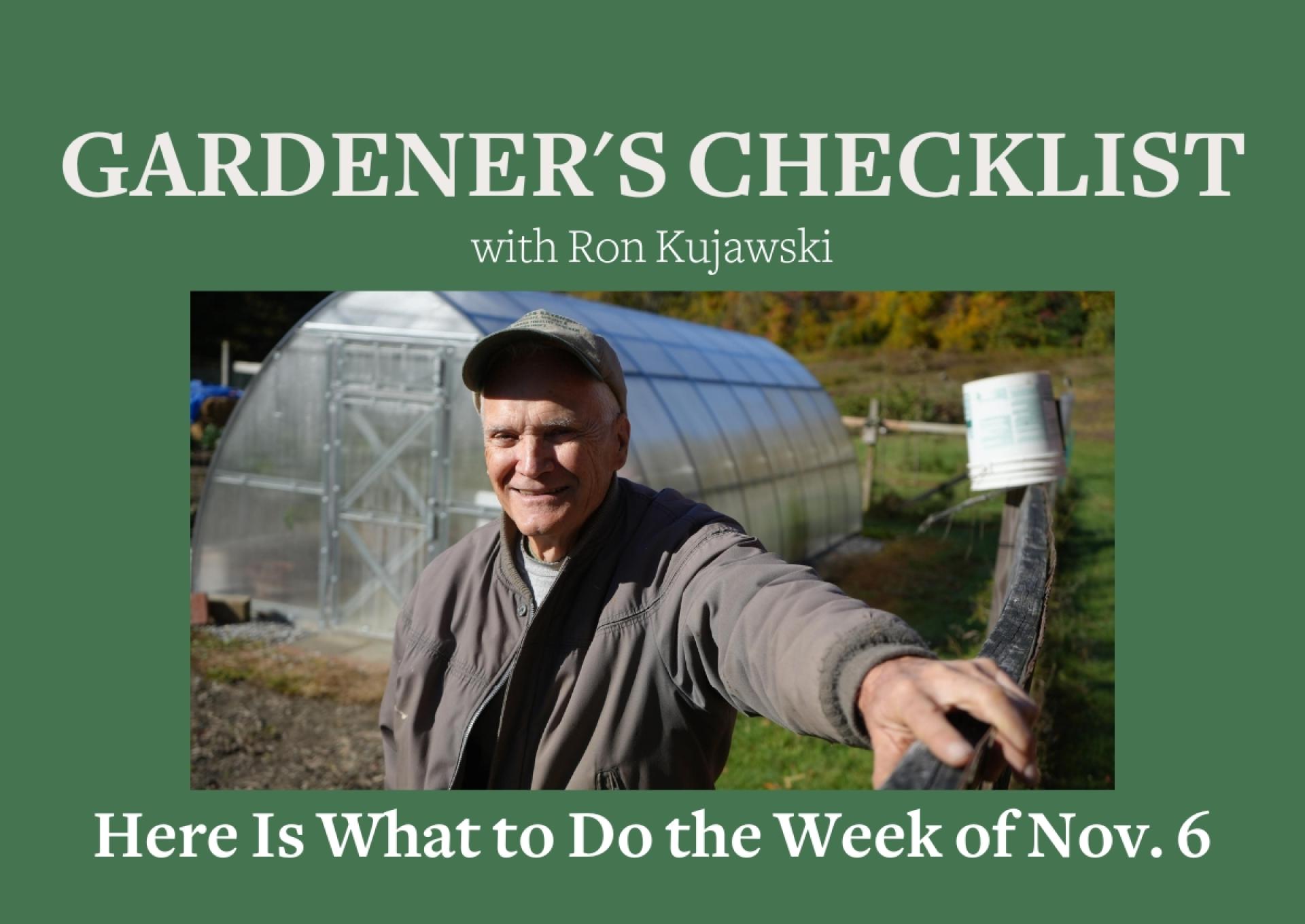You are here
Gardeners Checklist: Here Is What To Do the Week of Nov. 6
Gardeners Checklist: Here Is What To Do the Week of Nov. 6
By Ron Kujawski
• Apply a 3-inch deep layer of pine needles or shredded oak leaves as mulch around acid-loving shrubs such as blueberries, azaleas, rhododendrons, hollies, hydrangea, mountain laurel, Virginia sweetspire, and fothergilla.
• Use a garden spade to turn over heavy clay soils in the vegetable garden, or where new plantings are to be done next year in the flower garden. Leave the soil surface rough so that it will capture rain and snow through the winter. Cycles of freezing and thawing weather will break up the clods of clay and make the soil more workable next spring.
• Move large patio containers with small trees or shrubs into an unheated garage or barn. Wrap the containers with bubble wrap or similar insulating material. Place a layer of mulch on the surface of soil in each container. The purpose of this effort is to protect plant roots from exposure to freezing temperatures. Roots are much more sensitive to cold temperatures than are the above-ground parts of woody plants.
• Dig a trench in the vegetable garden and set pots of unplanted perennials in the trench. Then, backfill the trench. This will protect the plants through the winter and give you time to decide just where their permanent planting site should be. Procrastinators love that suggestion.
• After the last mowing, allow your lawn mower to run it until it is out of gas before storing it.
• Take a stroll around the landscape and flower gardens with a notebook in hand. Make notes on any herbaceous perennials that will need to be divided next spring and any perennials and shrubs that you’d like to move.
Speaking of making notes, this is the time of year when I jot down notes on the vegetable crops we grew in our garden. I’ll write comments on which crops and which varieties did well, which did not, which ones I’ll grow again, and which ones I will not. When making notes, I also go through our recipe file. "Huh?” Well, vegetable gardening and cooking do go hand in hand, and we’re always clipping and saving new recipes that use vegetables. If we don’t have a particular vegetable or herb called for in a recipe, I’ll make a note to grow it next year. Most often, it’s a matter of not having grown enough of a particular vegetable from our garden to satisfy our appetites. This is especially relevant to those vegetables which we preserve for consumption through the winter. Fortunately, my wife keeps accurate records of the quantities of vegetables that we have canned, frozen, dehydrated, pickled, or stored dry. For example, I know from these records that we use about 20 quarts of chopped and canned tomatoes, 20 quarts of tomato juice (mostly for soup) and two quart-sized freezer bags of dehydrated tomatoes per year. That means that I’ll have to plant 36 tomato plants next spring to meet our needs for fresh and processed tomatoes.
Ron Kujawski began gardening at an early age on his family's onion farm in upstate New York. Although now retired, he spent most of his career teaching at the UMass Extension Service. He serves on Berkshire Botanical Garden’s Horticulture Advisory Committee. His book, Week-by-Week Vegetable Gardener’s Handbook, is available here.
Help Our Garden Grow!
Your donation helps us to educate and inspire visitors of all ages on the art and science of gardening and the preservation of our environment.
All donations are 100 percent tax deductible.



